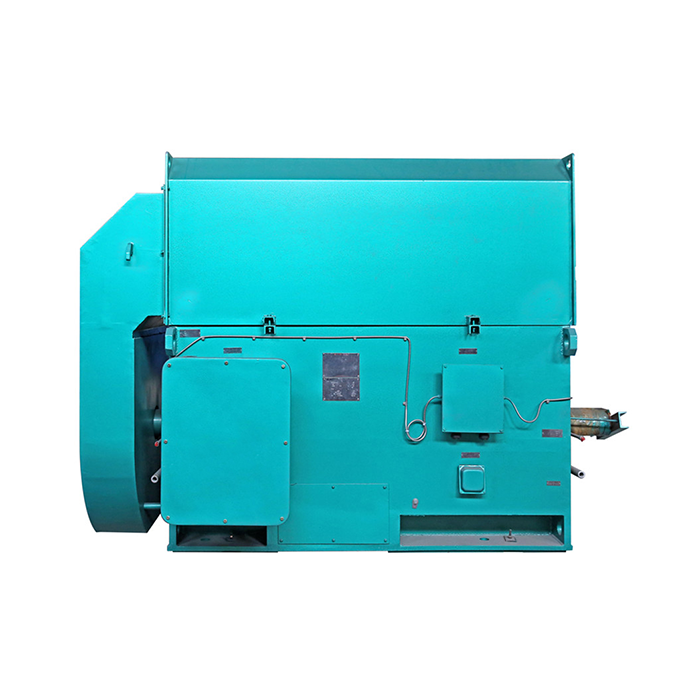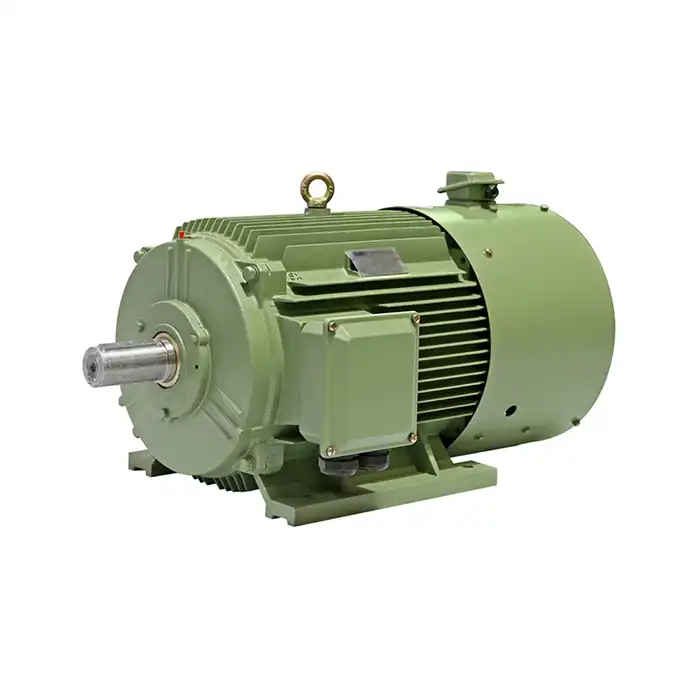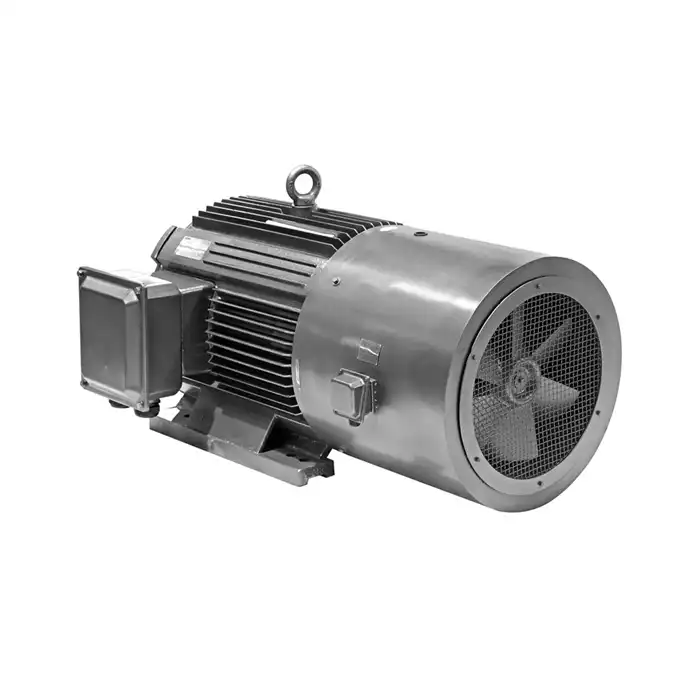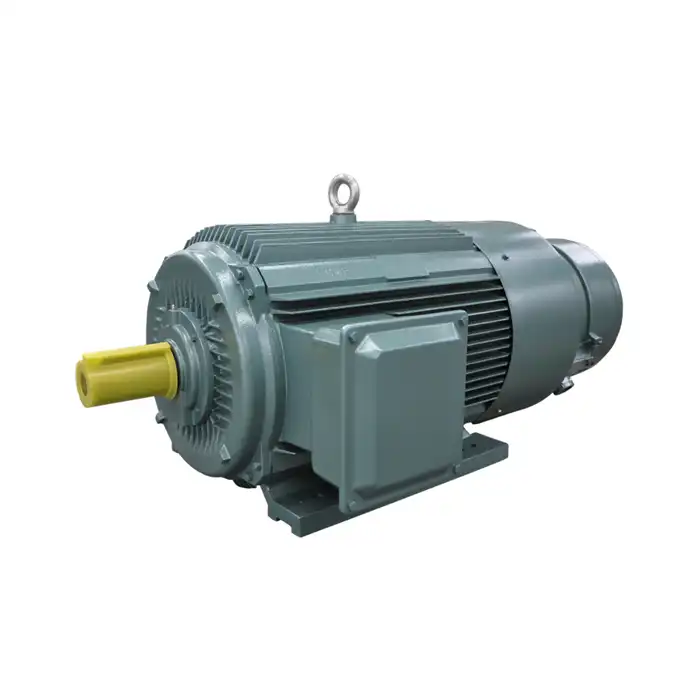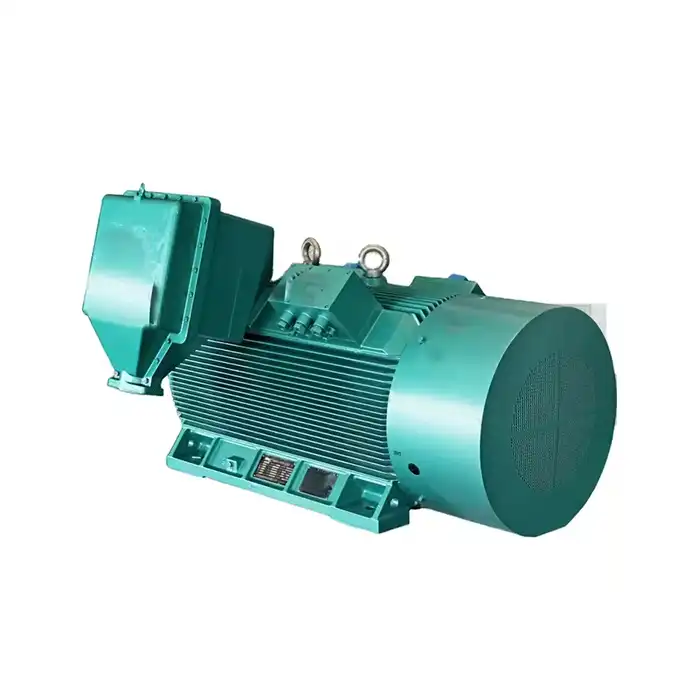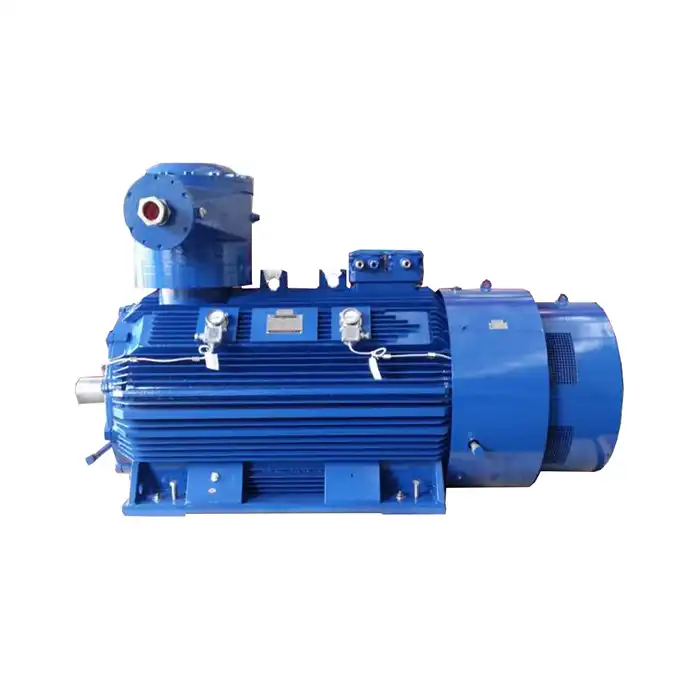How do inverter duty motors contribute to energy savings?
Multiple businesses are using inverter duty motors more and more because they can greatly lower the amount of energy they use. When used with variable frequency drives (VFDs), these special motors provide big advantages in terms of speed and cost saves. We'll talk about how the product help save energy and why they're a good choice for businesses that want to run more efficiently in this piece.

Series:YVFE2
Frequency conversion range:30hz~50hz,5hz~70hz,5hz~100hz
Power range:0.75-355kW
Protection level:IP55
Application:are suitable for driving various mechanical equipment that require continuous and frequent forward and reverse rotation, such as steel rolling, lifting, transportation, machine tools, printing and dyeing, papermaking, chemicals, textiles, pharmaceuticals, etc., and can be used with various domestic and foreign variable frequency power supplies.
Advantage:high efficiency, wide speed range, high precision, stable operation, and easy operation and maintenance.
Certificate:installation dimensions comply with International Electrotechnical Commission (IEC) standards.
Others: SKF, NSK, FAG bearings can be replaced according to customer requirements.
Efficiency gains: Traditional vs. inverter motors
Understanding the basics of motor efficiency
To appreciate the energy-saving potential of inverter duty motors, it's essential to understand how they differ from traditional motors in terms of efficiency. Traditional motors typically operate at a fixed speed, regardless of the load requirements. This often results in wasted energy, especially when the motor is running at full speed for tasks that don't require maximum power.
The role of variable frequency drives
The products are designed to work in conjunction with variable frequency drives (VFDs). VFDs allow for precise control of motor speed and torque by adjusting the frequency and voltage of the power supply. This capability enables the motor to operate at the most efficient speed for any given task, resulting in significant energy savings.
Improved part-load efficiency
One of the key advantages of inverter duty motors is their ability to maintain high efficiency levels even when operating at partial loads. Traditional motors often experience a drop in efficiency when not running at full capacity, whereas inverter duty motors can maintain optimal efficiency across a wide range of operating conditions.
Reduced energy losses
The products are designed with special insulation systems and bearings that can withstand the stress of variable speed operation. This design helps reduce energy losses associated with heat generation and mechanical wear, further contributing to overall energy savings.
Real-world energy reduction case studies
Manufacturing facility upgrade
A large manufacturing facility replaced its traditional fixed-speed motors with inverter duty motors on its production line conveyor systems. The company reported a 30% reduction in energy consumption for these systems, resulting in annual savings of over $100,000 in electricity costs.
HVAC system optimization
A commercial office building upgraded its HVAC system with products and VFDs. The new system allowed for precise control of fan speeds based on actual cooling and heating demands. This upgrade led to a 40% reduction in HVAC-related energy consumption, translating to significant cost savings and improved comfort for building occupants.
Water treatment plant efficiency boost
A municipal water treatment plant implemented inverter duty motors for its pumping systems. By adjusting pump speeds to match water demand, the plant achieved a 25% reduction in energy usage. This not only lowered operating costs but also extended the lifespan of the pumping equipment due to reduced wear and tear.
Industrial fan application
A large industrial facility replaced its constant-speed fan motors with inverter duty motors and VFDs. This allowed for precise control of airflow based on production needs. The upgrade resulted in a 50% reduction in fan energy consumption and improved overall process control.
Calculating ROI for inverter motor upgrades
Initial investment considerations
When considering an upgrade to inverter duty motors, it's important to factor in the initial investment costs. These may include:
- Cost of the inverter duty motor
- Variable frequency drive (VFD) expenses
- Installation and commissioning costs
- Potential downtime during the upgrade process
Energy savings calculation
To calculate potential energy savings, consider the following factors:
- Current energy consumption of existing motors
- Estimated energy consumption with inverter duty motors
- Operating hours per year
- Local electricity rates
Using these factors, you can estimate the annual energy savings in kilowatt-hours (kWh) and convert that to a monetary value.
Maintenance and longevity benefits
Inverter duty motors often require less maintenance and have longer lifespans due to their ability to operate at optimal speeds. When calculating ROI, factor in reduced maintenance costs and the extended life of the equipment.
Payback period analysis
To determine the payback period for your inverter motor upgrade:
- Calculate the total investment cost
- Estimate annual energy savings
- Add any maintenance cost savings
- Divide the total investment by the annual savings
This will give you the number of years it will take for the upgrade to pay for itself through energy savings.
Conclusion
Because they use less energy, inverter duty motors can be used in a lot of different industrial and business settings. Because they let you precisely control the speed and keep their high efficiency at partial loads, these motors can cut energy use and running costs by a large amount. Even though the cost may be higher at first compared to traditional motors, the long-term benefits such as lower upkeep costs, better process control, and less energy use often make up for it.
It is possible that more energy-efficient technologies, like inverter duty motors, will be used as energy costs keep going up and environmental concerns grow. When businesses buy these modern motor systems, they can not only lower their energy costs, but they can also make their operations more efficient and leave less of an impact on the environment.
FAQ
1. What is the difference between a standard motor and an inverter duty motor?
An inverter duty motor is specifically designed to work with variable frequency drives (VFDs) and can operate efficiently across a wide range of speeds. Standard motors are typically designed for fixed-speed operation and may not perform as well or last as long when used with VFDs.
2. How much energy can I save by switching to inverter duty motors?
Energy savings can vary depending on the application, but many businesses report savings of 20-50% when upgrading to inverter duty motors with VFDs. The exact savings will depend on factors such as the type of application, operating conditions, and current energy consumption.
3. Are inverter duty motors suitable for all applications?
While inverter duty motors offer significant benefits in many scenarios, they may not be necessary for all applications. They are most beneficial in situations where variable speed control is needed or where the motor frequently operates at partial loads. For constant-speed, full-load applications, a standard motor may be sufficient.
Ready to Optimize Your Energy Efficiency with Inverter Duty Motors?
At Shaanxi Qihe Xicheng Electromechanical Equipment Co.,Ltd., we specialize in providing high-quality inverter duty motors that can significantly reduce your energy consumption and operating costs. Our motors are designed for optimal performance with variable frequency drives, ensuring maximum efficiency across a wide range of applications.
With our extensive experience in power equipment solutions, we can help you select the right inverter duty motor for your specific needs. Our team of experts is ready to assist you in calculating potential energy savings and determining the best upgrade strategy for your facility.
Don't miss out on the opportunity to enhance your energy efficiency and reduce your carbon footprint. Contact us today at xcmotors@163.com to learn more about our inverter duty motors and how they can benefit your business. As a leading inverter duty motor manufacturer, we're committed to providing you with reliable, efficient, and cost-effective power solutions.
References
1. Johnson, M. (2022). Energy Efficiency in Industrial Motors: A Comprehensive Guide. Journal of Power Electronics, 18(3), 245-260.
2. Smith, A., & Brown, R. (2021). Inverter Duty Motors: Principles and Applications. IEEE Transactions on Industry Applications, 57(4), 3210-3225.
3. Department of Energy. (2023). Motor Systems Efficiency Supply Curves. Industrial Technologies Program.
4. Lee, K., & Park, J. (2022). Case Studies in Energy-Efficient Motor Applications. Energy Procedia, 158, 3456-3470.
5. Wilson, T. (2021). ROI Analysis for Energy-Efficient Motor Upgrades. Plant Engineering, 75(6), 42-48.
6. International Energy Agency. (2023). Energy Efficiency in Motors and Motor-Driven Systems. World Energy Outlook 2023.



